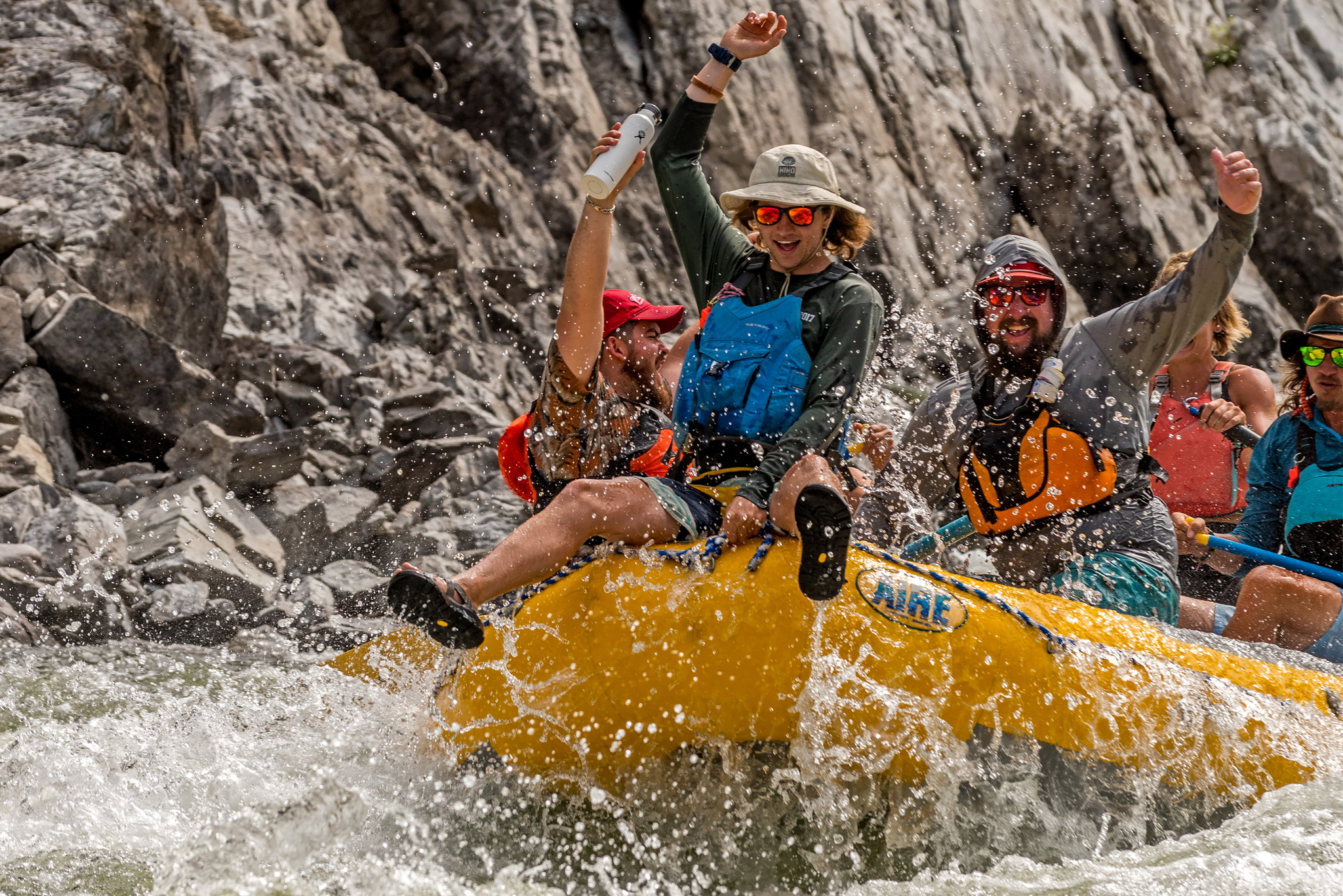Cliffside. Tumbleweed. Triple Bridge. Boat Eater. Promising a day of water-soaked laughs among such colorfully-named rapids, it’s no wonder Pangaea River Rafting’s motto is “Leave Boring Behind!” What better way to test out this mantra on a stunning, Inland Northwest summer day than to hop on a whitewater raft and ride the churning waters of Montana’s Clark Fork River?
Presented with the opportunity to join Pangaea one August day, I can’t pass up the chance to throw myself into nature and challenge the river gods to stay just beyond their grasp.
Undeterred by the distance, I make the drive from Coeur d’Alene through the breathtaking Lolo National Forest to Pangaea’s property just 15 minutes south of Superior, Mont. It’s with great anticipation that morning that I greet Josie and Tessa, two of the guides. Their humor and energy are instantly contagious and a positive omen that today will be a great day.

The guides’ first instructions of the day are to retrieve life jackets and oars from one of the equipment sheds, and then gather on the lawn to go through safety procedures. There are about six rapids we will encounter today, and lunch will be held river-side around the halfway point. If we fall out of the raft, we’re supposed to be “feet and nose,” which means on our backs, floating downriver with our feet ahead of us, and our hands treading water. This way we can see what’s coming and push off rocks with our feet if necessary. Makes sense. We’re also supposed to just go with the current and not try to swim to shore because there are brambles and tree roots the boats can’t navigate. Got it.
As if these precautions aren’t enough to make us begin to uneasily question our activity choice, we’re then told what to expect if the raft flips over. Wait, what? Continuing casually, the guides describe how they will flip it back over, which involves using ropes and flipping it “hot dog” style. They also go over how to hold and manage our oars, and what kinds of commands they’ll be giving us. All this serious, potentially life-threatening stuff aside, the other rafters and I are somehow still eager to “Leave Boring Behind” and have some serious fun.
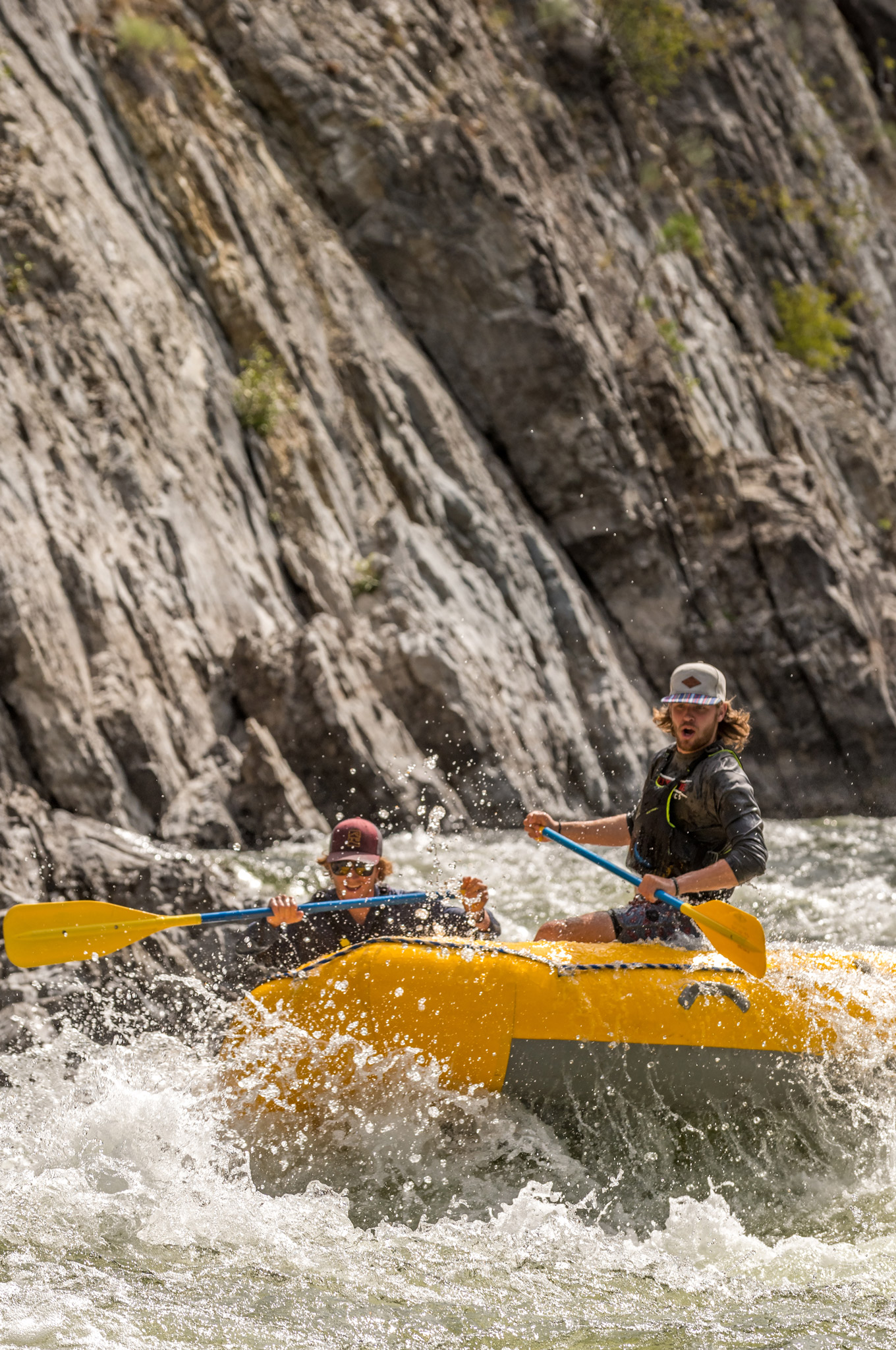
We load up in a renovated school bus hauling a trailer piled with rafts and finally head for the river. At the drop-in spot, we’re organized by raft and line up with our guides to slowly lower our rafts down a ramp to the water. With everyone organized into groups, I see that there are four rafts and two kayaks in our contingent. I meet my raft companions, a father and son from Texas named John and Nick, and see that Tessa will be our guide.
Our first stretch of river is calm and wide, giving us time to situate ourselves and get a feel for the raft. It feels so good to be out on the water. From her perch centered at the rear of the boat, Tessa goes over different commands and has us practice responding to them. We turn, propel and maneuver the raft to variations of “all forward,” “right side forward, left side back,” and “left side rest, right side two strokes forward.” Nick and John start on the right side of the raft, and Tessa helps me with the left side with her larger, fixed oars.
Story continues after a quick message from our sponsor below.
We round the bend and lay eyes on our first rapid of the day: the appropriately named Warmup Rapid, a little class II rapid to get us started. I feel myself tense up as we approach, ready for action. Tessa has us hold while she gets us pointed toward the best path to take, and when it seems we’re nearly on top of the rapid, she finally shouts, “all forward!”
Water sprays my face, but I lean into it as I dip my oar into the rolling river, focused on propelling the raft onward. As we ride the whitewater, my hands quickly get a feel for how to hold the oar, my feet how to wedge into the raft’s creases as anchors, and my legs and core how to stabilize me atop the raft’s inflated side. Nick, John and I row like maniacs, and then as quickly as it came, the rapid is behind us and all is calm again. Although quick and comparatively mild, Warmup Rapid has definitely gotten my adrenaline flowing.
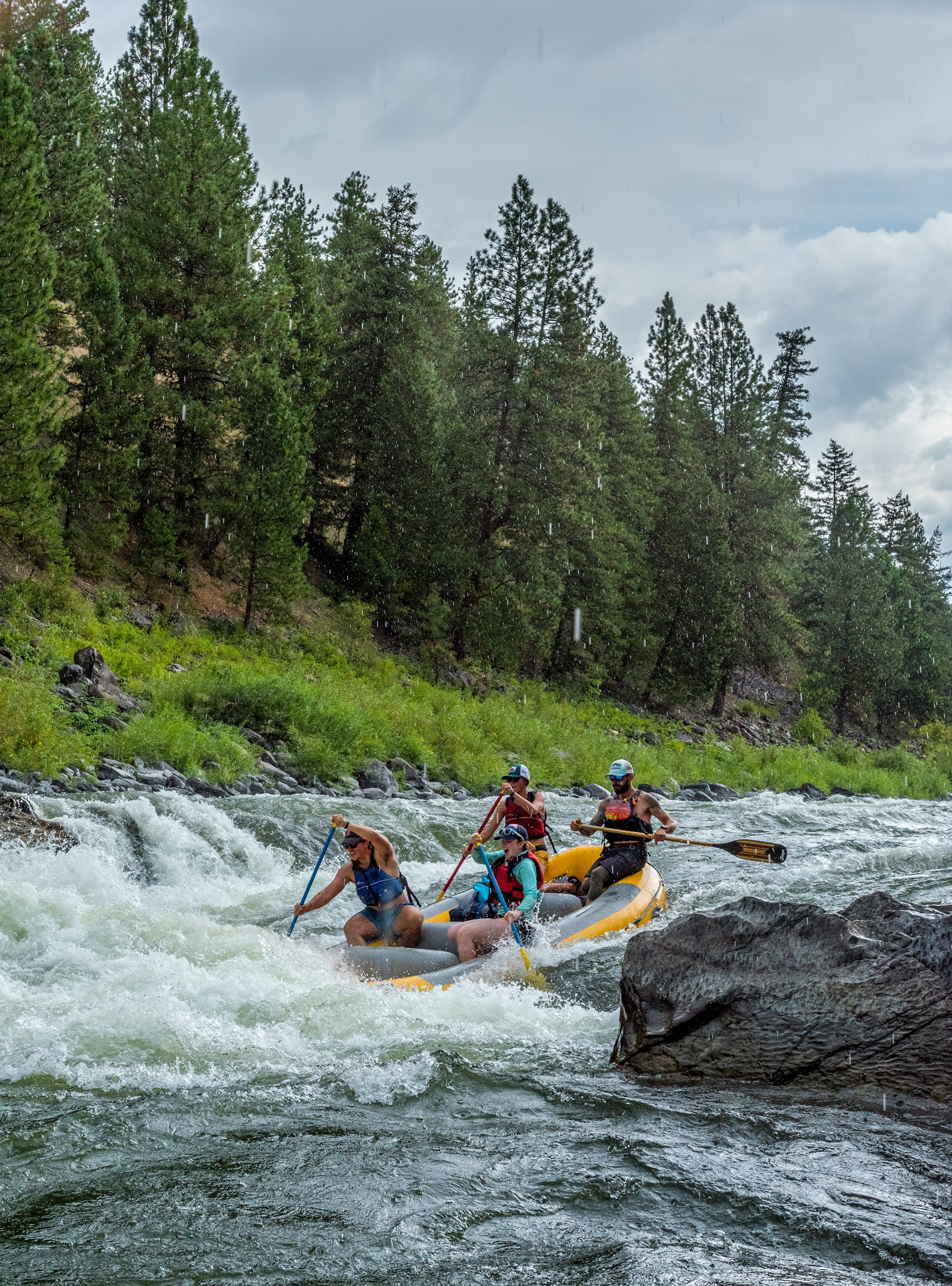
I come to realize this will be more or less the rhythm of the day: stretches of calm water with casual conversation, interspersed with sudden jolts of heart-pounding action aboard roiling rapids. I learn a bit about my raft mates as we drift. Nick is just about to begin his first semester of college, John works at one of the large universities in Texas, and Tessa and I share a love for traveling. The rafts play a lazy game of leapfrog, taking turns leading the pack and bumping into each other during inter-raft socializing. The kayakers, Paul and Wes, alternate between doing their own thing and docking at one of the rafts to chat for a bit.
One of the class III rapids we go through is called Triple Bridge Rapid, though it technically runs below four bridges. As we approach the rapid, I notice perhaps half a dozen people in wetsuits hanging out near the shore. Before we enter the rapid, Tessa explains they’re surfers who come here to practice getting up on their board in one of the waves, as this is one of the few such spots they can find so far inland. Fascinated, I watch one or two of them stand and ride the wave for a few seconds before being swept down the current and doggedly trudging back up to do it again.
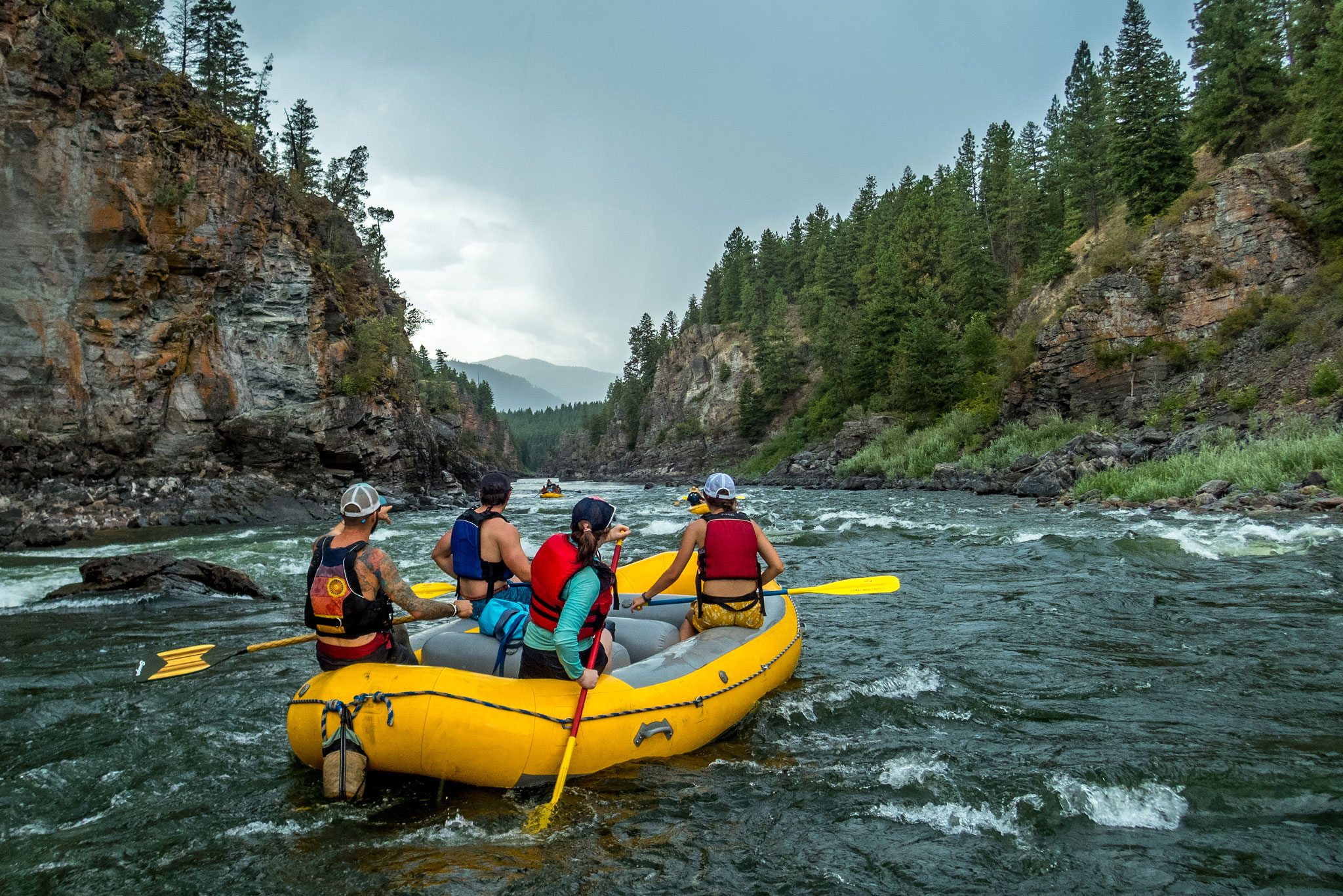
Not long after Triple Bridge, we approach Tumbleweed Rapid. Tessa had told us there’s a photographer positioned here to take our picture, so we’ll need to look up towards the end of the rapid. I quickly realize Tumbleweed is a stronger rapid, and it requires all our strength and concentration to power through. As the intensity begins to subside, we spot the photographer up on a huge boulder and raise our oars in salute as we pass. Apparently, Tumbleweed takes Wes and his kayak for a spin, and I later learn that Devon, Tessa’s cousin, jumped out in the middle of it to embrace the river.
We pull off onto a rocky stretch of land to enjoy a gourmet potato bar for lunch. The food and two foldable tables had all been distributed among the rafts, and were assembled by some of the staff. While they set up, I chat with Paul and Wes, and they mention a stream on the other side of the bank. Paul says it’s called Fish Creek and comes down from a glacier. It’s only about 10 miles long, so the water stays clear and clean before it dumps into the Clark Fork here. I follow them down the other bank and up a bit to where Fish Creek spills over a little drop off. We jump into the water and my breath is nearly sucked completely out of my lungs by its icy purity.
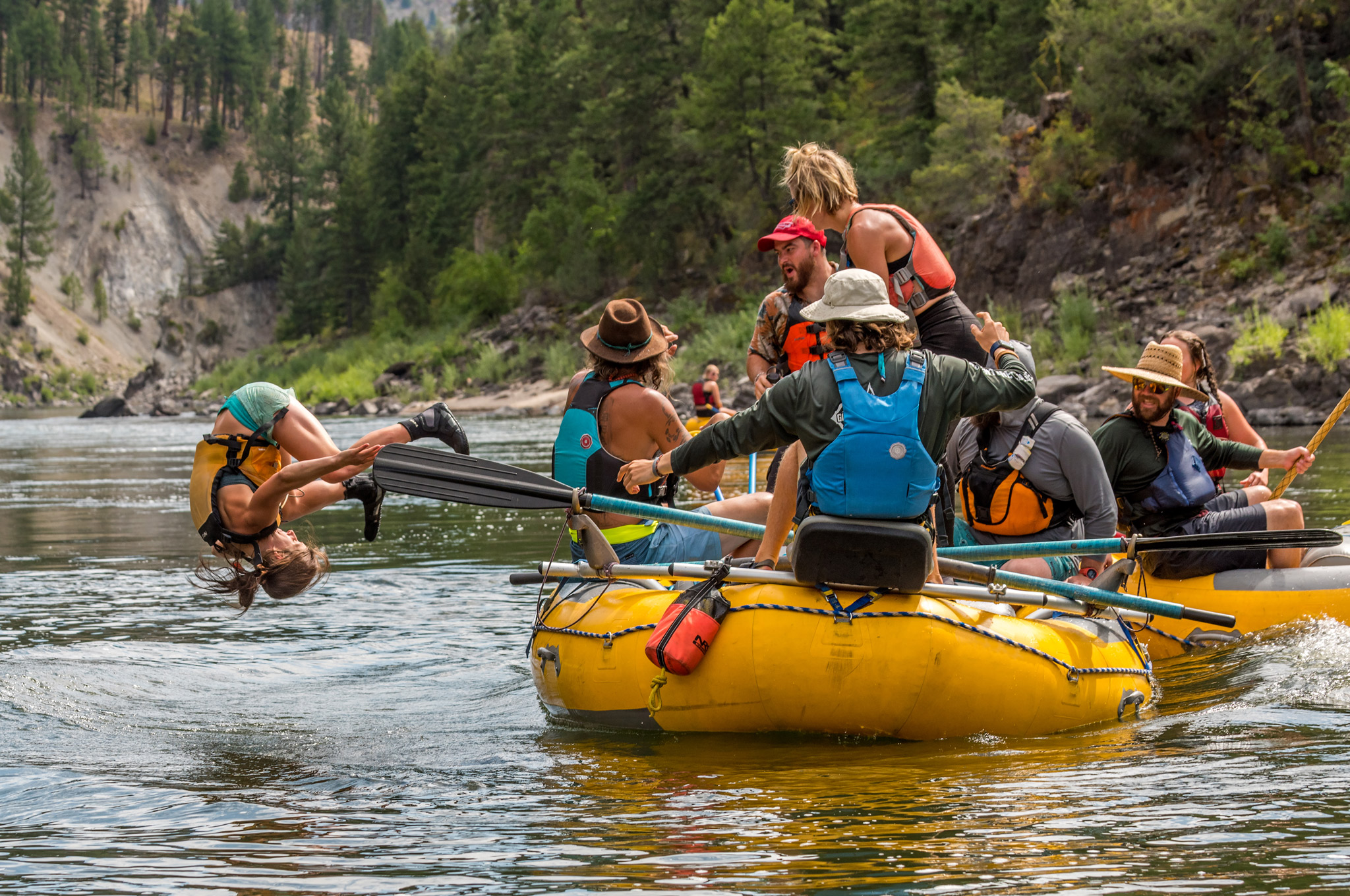
Time seems to fly after lunch. For one of the rapids, Nick rides on the front of the raft, what they at Pangaea call “riding the bull.” He hangs on tight, getting thoroughly doused by the rapids surging around his feet. John takes a turn up front for another rapid, and chooses to swim through a tamer one that Nick and I stand and balance through. I manage to keep my seat through all the rapids except a particularly rough one that pops me up and across the raft, almost knocking me into Nick.
Shortly before the end, we pull off at a large rock to stretch our legs and take turns jumping off into the deep pool below it. One of the kids on another raft does a gainer, and Devon graces us with a belly flop. Squirt guns are busted out when we’re back on the water, and it’s a battle of the rafts to see who can soak the others most.
Before I know it, I can see the yellow school bus parked on the road above the river, meaning our float has come to an end. My body suddenly feels tired, but my heart isn’t ready to leave the water. I’d always wondered how river guides like Tessa and Josie could spend an entire summer away from civilization, living so simply and spending all day on the water, day after day. But after getting a glimpse of it for myself, it strikes me as a beautiful way to disconnect from the craziness of civilization and engage with the pure honesty of nature. The river is alive and ever-changing, ensuring every day is anything but dull for those who choose to embrace adventure and leave boring behind. N
By Abby Owens
Photography By Joel Riner


